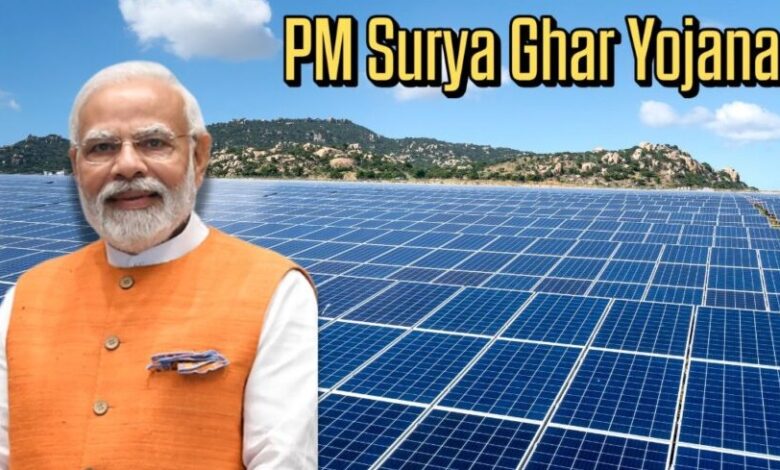Advancing Residential Rooftop Solar Adoption in India under PM Surya Ghar Yojana
The Pradhan Mantri Surya Ghar Yojana has laid a strong foundation for transforming India’s residential rooftop solar sector

India’s renewable energy journey has received a major boost through the Pradhan Mantri Surya Ghar Yojana (PMSGY), which has transformed the residential rooftop solar landscape across the country. According to a new report by the Institute for Energy Economics and Financial Analysis (IEEFA) and JMK Research & Analytics, the scheme has added about 4.9 GW of capacity within just over a year of its launch.
As of July 2025, a total of 4,946 MW of residential rooftop solar capacity has been installed across various states and Union Territories under the PMSGY, while subsidy disbursements have crossed ₹9,280 crore (US$1.05 billion).
The report also notes that over 57.9 lakh applications have been submitted for rooftop solar installations since the scheme’s inception. However, despite a fourfold rise in applications between March 2024 and July 2025, only 13.1% of the target of 1 crore (10 million) households and 14.1% of the allocated ₹65,700 crore (US$7.5 billion) in subsidies have been achieved so far — making the FY2027 target of 30 GW capacity an ambitious challenge.
Key Highlights
Bridging the Awareness and Affordability Gap
Before the launch of PMSGY, the residential rooftop solar segment lagged far behind the commercial and industrial sectors due to high upfront costs and limited consumer awareness. The scheme has successfully addressed these issues by offering capital incentives, simplified procedures, and direct subsidies to make rooftop solar financially viable for households.
Challenges in Financing and Execution
Although public interest has surged, the report points out barriers such as low awareness of financing options, complex loan procedures, technical glitches in the grievance redressal system, and fragmented supply chains that hinder large-scale adoption.
Conversion Rates and State Leaders
As of July 2025, the national installation-to-application conversion ratio stands at 22.7%, indicating that a large number of applicants are yet to complete installations.
Gujarat and Kerala lead with conversion ratios above 65%, thanks to their robust vendor ecosystems, higher consumer awareness, and efficient state-level implementation.
Gujarat also leads in total installed capacity with 1,491 MW, followed by Maharashtra, Uttar Pradesh, Kerala, and Rajasthan, which together account for 77.2% of total installations under the scheme.
State-Level Financial Incentives
Several states—including Assam, Delhi, Goa, Uttar Pradesh, and Uttarakhand—have introduced additional capital subsidies to supplement the central scheme and reduce upfront costs for consumers.
Driving Capacity Building and Domestic Manufacturing
“PMSGY has steadily expanded its policy framework to speed up residential rooftop solar adoption. Since 2024, it has rolled out a nationwide capacity-building programme to train over three lakh people and help vendors, utilities and financiers upskill,” said Jyoti Gulia, Founder, JMK Research, and a contributing author of the report.
The ‘Innovative Projects’ component of PMSGY offers grants covering up to 60% of project costs to promote pilot initiatives and new business models. A digital Domestic Content Requirement (DCR) mechanism has also been introduced to ensure the use of verified domestic materials in solar modules.
In addition, states and Union Territories are being encouraged to develop solar cities and model solar villages to demonstrate best practices in community-level solar adoption.
Addressing Persistent Barriers
“Low consumer awareness and limited access to finance remain significant barriers to rooftop solar adoption. Outdated perceptions of high upfront costs and maintenance persist, especially in rural areas,” said Prabhakar Sharma, Senior Consultant, JMK Research, and co-author of the report.
The report also highlights that fragmented supply chains for essential components such as panels, inverters, and mounting structures are causing implementation delays.
“Establishing clear, time-bound rooftop solar capacity targets at the state level is essential for creating a coherent vision and ensuring effective policy execution,” added Vibhuti Garg, Director, IEEFA – South Asia.
Enhancing Grievance Redressal and Consumer Support
While a grievance redressal mechanism exists under PMSGY, its effectiveness remains limited.
“PMSGY should establish a district-level escalation matrix so that subsidy disbursement delays, incorrect data entries or portal malfunctions can be routed beyond the DISCOM or portal level,” suggested Aman Gupta, Research Associate, JMK Research, and co-author.
To boost the conversion rate of applications into installations, the report recommends setting up state- and district-level facilitation cells to guide households through applications, documentation, and subsidy claims.
Furthermore, consumer outreach and marketing campaigns can play a pivotal role in improving public understanding of the economic and environmental benefits of rooftop solar adoption.
Conclusion
The Pradhan Mantri Surya Ghar Yojana has laid a strong foundation for transforming India’s residential rooftop solar sector. However, achieving the 30 GW target by FY2027 will require enhanced state coordination, streamlined financing, efficient grievance redressal, and intensive awareness campaigns to empower citizens and accelerate India’s clean energy transition.
The writer of this article is Dr. Seema Javed, an environmentalist & a communications professional in the field of climate and energy




